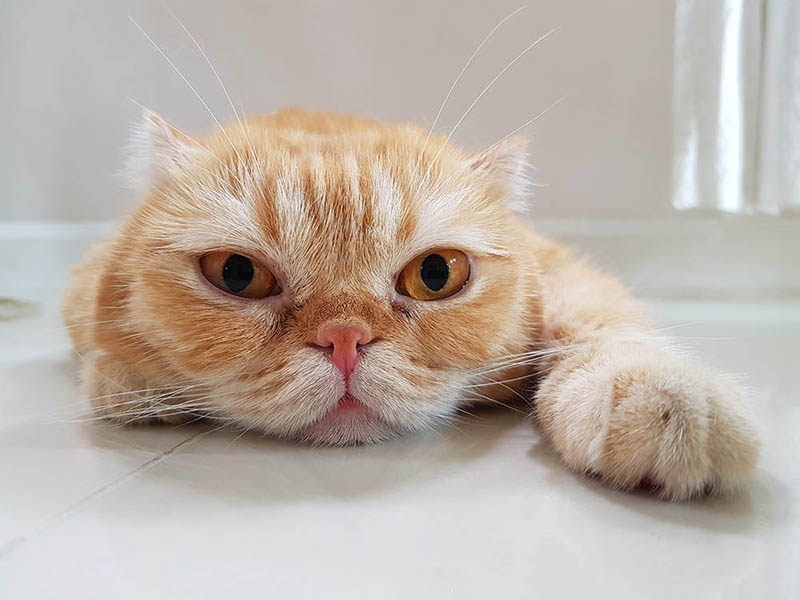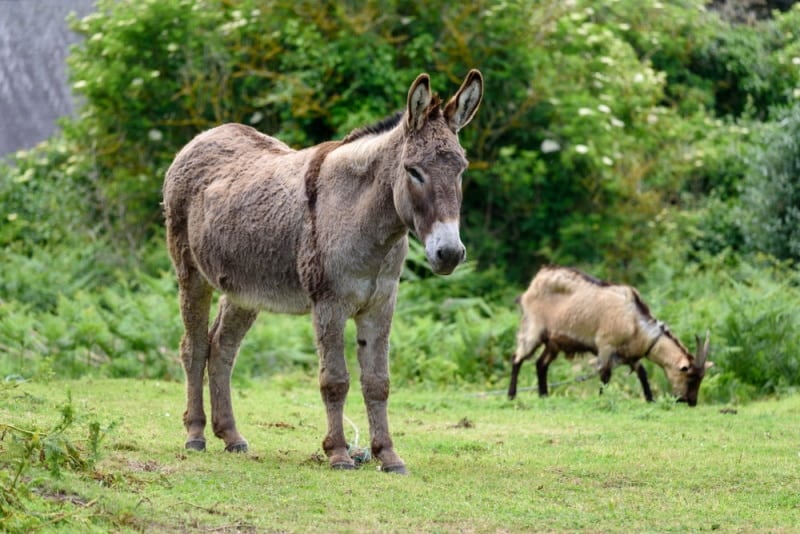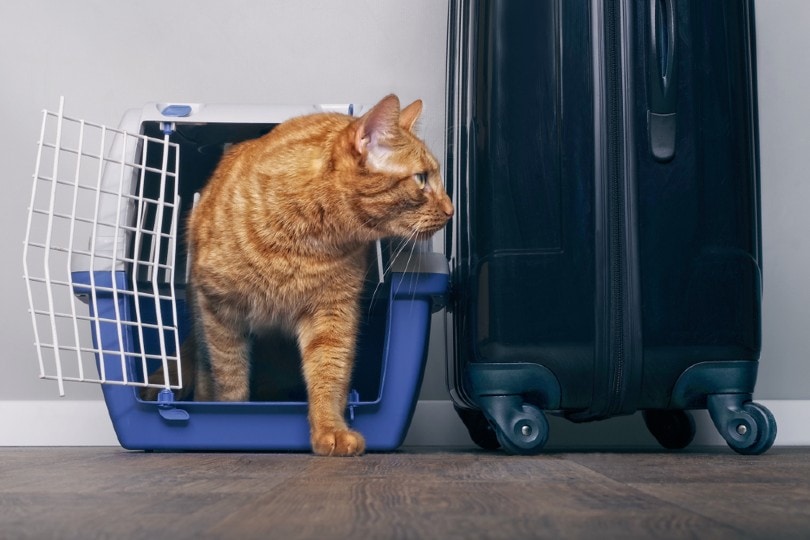VET APPROVED

The information is current and up-to-date in accordance with the latest veterinarian research.
Learn more »Click to Skip Ahead
Along with their tail and eyes, a cat’s ears are one of the most expressive areas of your feline friend’s body. With 32 muscles in each ear, a cat can swivel, turn, direct, and independently move their ears, typically to pinpoint the source of a noise, but you can also tell a great deal about a cat’s emotions from the positions of their ears.1
In particular, if a cat’s ears are pinned back, it is usually a sign of stress, fear, or anger. It is important to remember that all cats are different, however, and whether you’re trying to read their ears or tail position, you need to consider the context. Determine how your cat is acting and what they were doing to cause the movement in the specific body part, and check their surroundings.
Read on for more details about why your cat might have their ears back and what other ear positions might mean coming from your feline friend.

The 4 Reasons Why Cats Put Their Ears Back
1. Angry
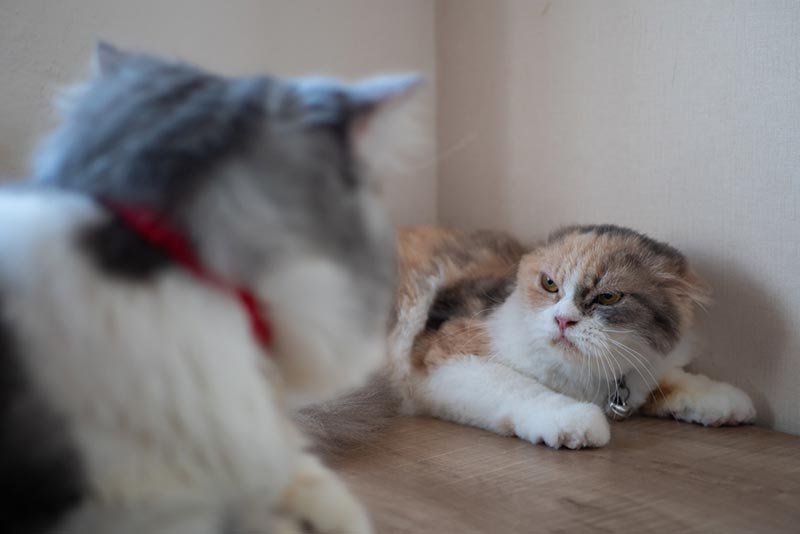
One of the most common reasons for a cat to put their ears back is that they’re angry or upset. If the action that is causing their anger continues, it can lead to scratching or biting if they see no way out. Otherwise they will try to draw back. So, if it is you who is making your cat angry, flattened ears are a good sign that it might be time to stop doing whatever you’re doing.
2. Fighting
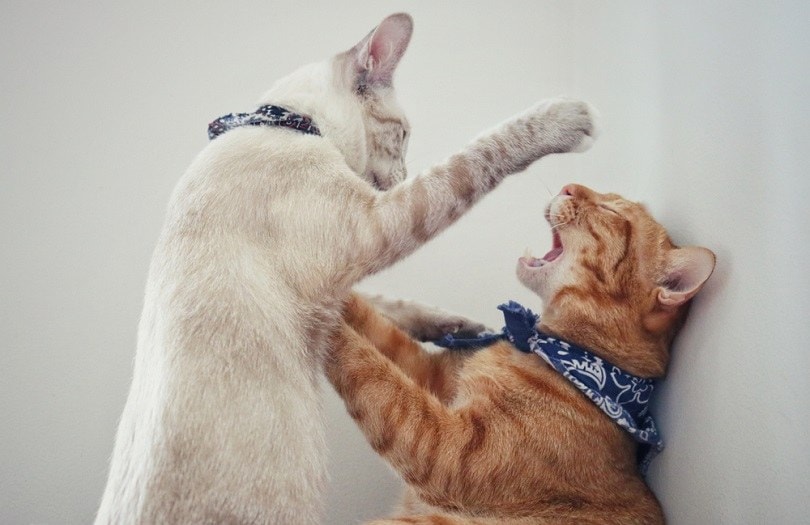
A cat’s ears are incredibly sensitive and highly efficient, but they also protrude from the head. They’re sensitive and are in the firing line when they get in a fight. As such, cats will hold their ears back and against their head to keep them out of harm’s way and prevent them from getting scratched or bitten.
3. Scared
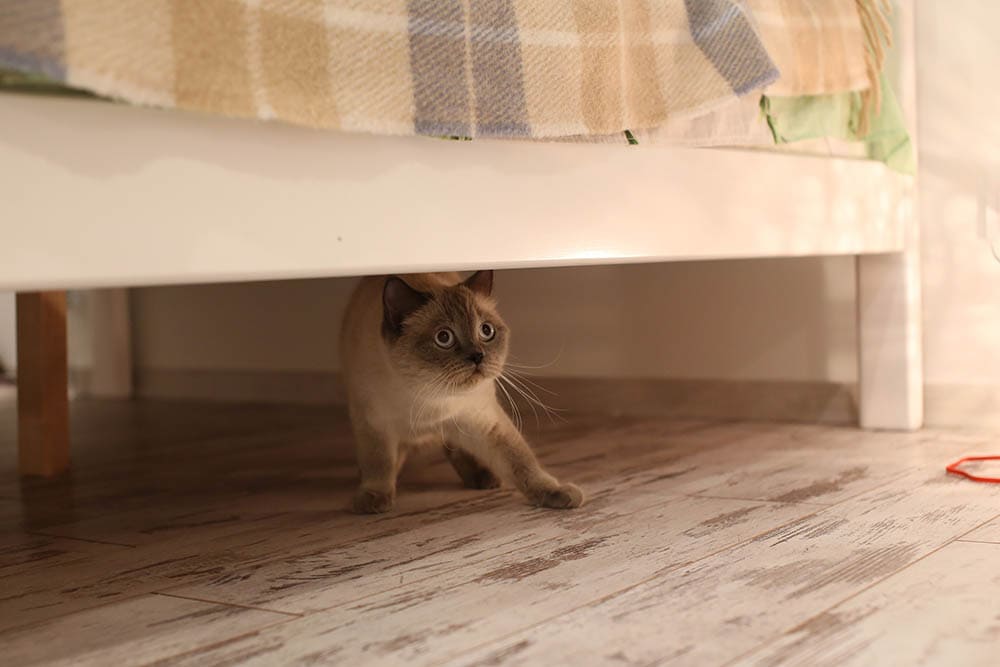
When the fight-or-flight response kicks in, your cat’s ears will likely pin back due to the sudden fear they’re experiencing. Either they’re about to get in a fight and want to keep them out of the way, or they need to be more streamlined and able to run quicker.
4. Playing
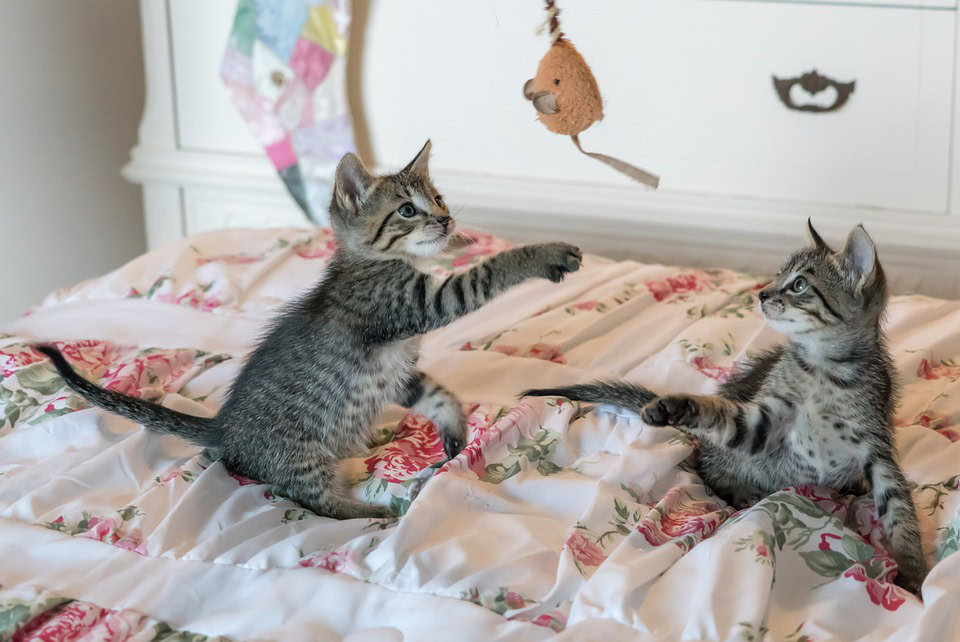
When cats play, they mimic many of the motions and movements that they would exhibit during real fights. They use playtime as a means of practicing and honing their skills, so it stands to reason that they may pin their ears back when play fighting because they would do this during a real fight. Even a play bite or scratch to the ears could hurt, so it is yet another time when your cat needs to defend their sensitive ears.
Regular play sessions can help your cat stay happy and healthy. Why not start the play with a fun toy like Hepper's Catnip Stick Toy? These sturdy toys are double-bagged, bite-proof, and filled with 100% organic catnip. Choose your favorite pastel color and treat your cat to hours of fun!
At PangoVet, we've admired Hepper for many years, and decided to take a controlling ownership interest so that we could benefit from the outstanding designs of this cool cat company!

Why Do Cats’ Ears Go Back When Playing?
When cats play with other cats, dogs, or even people, they mimic a lot of the motions and actions that they would take in a real fight. This is why it can be difficult to tell whether two cats are playing or becoming annoyed with one another. Since your cat would pin their ears back in a real fight, they may do the same thing when playing.
Other Ear Positions & What They Mean
Ear position can seem somewhat random, but once you start concentrating on your cat’s ears, you may notice they adopt certain ear positions depending on what is happening in their surroundings.
- Natural — A cat’s natural ear position is upright but not fully erect and pointing slightly forward. This enables them to hear most things around them evenly and is usually a good sign that your cat feels comfortable and content.
- Upright — When the ears are erect and pointing directly upward, your cat is really concentrating. They’ve likely heard a noise that has gotten their attention, and they’re trying to determine exactly what the noise was and where it was coming from.
- Twitching—If your cat’s ears are twitching, it can be a sign of irritation or that they’re nervous or excited about something, or getting ready to pounce. Itchy ears and some neurological conditions can also lead to ears twitching and should be looked over by the vet.
- Uneven — If the ears are pointing in different directions, typically with one ear up and one ear down, this means your cat is listening out for something or concentrating on a distant noise.
If you’re concerned about your cat’s behavior or need help interpreting ear positions, we recommend speaking with a veterinarian.

Conclusion
Cats’ ears can be extremely expressive. When taken in context, their positions can alert you to your pet’s current state of mind. A natural position means the cat is relaxed and comfortable, while upright ears mean they are concentrating.
When the ears go back, it usually means that your cat is scared, or angry, though some cats will mimic this position when they are play-fighting or playing too.
- See also: Why Are My Cat’s Ears Hot?
Featured Image Credit: Nana Trongratanawong, Shutterstock
